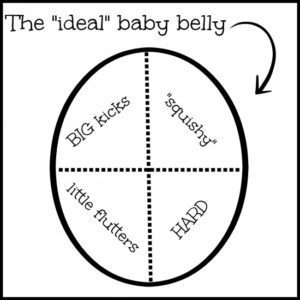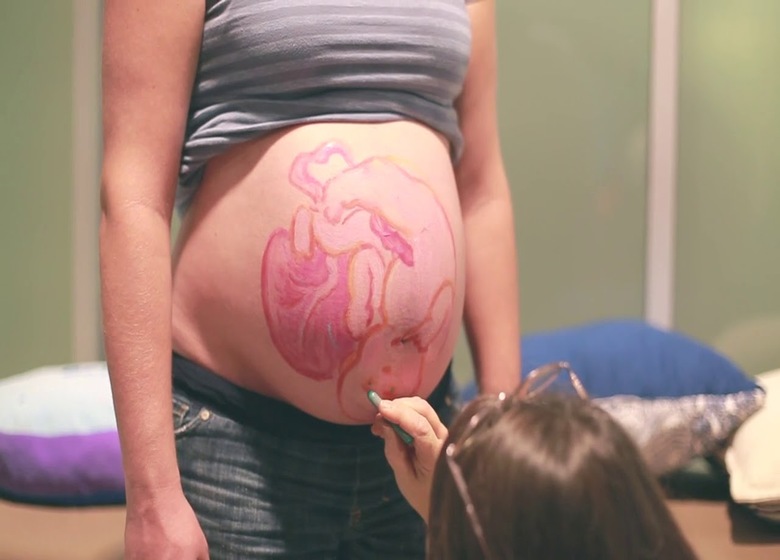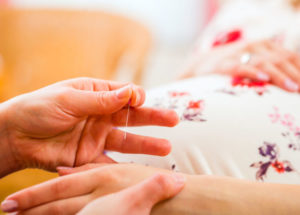Belly Mapping: Discover Baby’s Position
The final position of the unborn baby before childbirth can affect the labour and delivery of the mother-to-be. The best position for the baby to be in before delivery is with her head down, facing your back. Women can find out in which position the baby is by using a technique called belly mapping.
What Is Belly Mapping?
Belly mapping is the process of determining your baby’s birthing position at the beginning of the third trimester. This is done by touching the abdomen and predicting the baby’s position based on the movements felt by the mother-to-be. This belly mapping procedure was pioneered by a woman named Gail Tully in the 1970s.
What To Know Before Belly Mapping?
- The best time to do it is after 30 weeks (or 7-8 months).
- It may be easier to map your belly after an appointment with your doctor or midwife because the professionals can help you get an idea of the baby’s general position.
- Certain factors such as the placement of your placenta, amniotic fluid levels, and tummy tone affect how you feel the sensations of kicks & bumps which help you map baby body parts.
- Choose a time when your baby is usually active, and ensure you have a comfortable, quiet spot to relax.
What would you need?
You can either choose to draw a representation of your belly on a piece of paper or draw directly on your belly. If you decide to draw directly on your belly, choose a nontoxic marker or paint. Either way, divide the circle into quadrants to help you identify the various parts of your belly and where movements occur.
Drawing the map
Sketching your baby on paper is even more powerful than visualizing your baby in your mind’s eye. “Seeing” your baby ignites fires in your heart beyond imagination. Highly technical ultrasound scans have been shown to increase parents’ positive perceptions of their babies. Yet ultrasound is a medical tool that can either reassure or increase questions, many of which suspend bonding until the question of normalcy is answered. Another way of visualizing a baby is to have her painted right on the mother’s abdomen. Painting the baby in the position determined by the pregnant woman’s perceptions of kicks and wiggles is a bonding experience that unites the parent, partner, and family in celebration of the life within.
Let’s explore how drawing can increase bonding. Your hand moves the pencil or crayon along the curves and lines of your child. It’s as if you discover this mysterious visitor as you draw. You begin to see the image, feeling the love of creation as you draw. This is the being within, and the art expresses your hope, your wonder, your own emerging self.
Belly Mapping is a three-part process to discover your baby’s position in late pregnancy.
- First, draw a circle, dividing it into four areas to help you draw baby’s small parts in their proper locations. Fill in the “pie” you’ve drawn with marks to indicate the kicks, flutters, bulges, and firm, smooth areas.
- Sketch the baby around the circles and lines, like connecting the dots in a coloring book page. Next, put a doll over your map, and then over your belly, to visualize your baby’s actual position. Do the hands match the location of small flutters? That’s about where they should be. Put the doll’s feet where you feel the biggest kicks. Swing the doll’s back around to match the largest firm, smooth part of the baby that you feel. (An anterior placenta will mask the baby with the big, smooth placenta.)
- Lastly, you can describe your baby’s position with right, left, anterior, posterior or other words. But the real result is in the connection between mother and child within.
Visualizing the Baby

Image source – Makingmine
Find The Baby’s Head: Lie flat on your back or in a partly reclined position. Take deep breaths and relax. Place pressure very gently on the upper pelvic area above the pubic bone with your fingertips. If you feel something hard and round, it is the baby’s head. Next, if you feel something round and soft, it could be the baby’s bottom. If you have felt hiccups in your lower abdomen, it means the baby’s head is downwards. You can try to pinpoint the location of the head using the direction of the baby’s movements. Strong kicks and rolls are from the legs and knees, but light fluttering movements are hands or fingers. Once you locate the head, mark it on your belly with the marker or on paper.
Locate The Baby’s Back: Next, try to find the baby’s back. If you move your hands upwards from the baby’s head – you can feel a smooth, hard mass, this is the baby’s back. If you cannot locate the back, it could be because the baby is in a posterior position where the baby’s back is facing your back.
Use a Prop Doll: Use a baby doll to mirror the position of the baby’s head and back to figure out where the hands and feet are. Use the force and direction of the baby’s movements to locate the position of the hands and feet. Once done, mark this also on your belly or on the paper to give you the baby’s position.
What Does Baby Position Mean?
The unborn baby keeps changing position inside the womb as she grows. Before childbirth, the baby gets into a position that is ideal for natural childbirth. This is called the occipito-anterior position. In this position, the baby’s head is downwards near the cervix, and she faces your back. Her back is against your belly. This makes it easy to push the baby through the birth canal during labour. The baby may be in different positions inside the womb. Some of these are:
1. Head Downwards
Around 48 to 49 babies out of 50 will be in the head down position at 37 weeks of pregnancy just before childbirth. The baby may even turn to the head down position after labour starts. The head down position is when the baby’s head is facing the birth canal.
2. Breeched
The breech position is not an ideal position for childbirth as the baby’s head faces upwards and the baby’s bottom or feet face downwards. There different types of breech positions include cross-legged, bottom downwards, and feet first. If during belly mapping, the breech position is found, the mom-to-be can try stimulating the baby to turn around with certain exercises.
3. Anterior
Anterior position is when the baby is facing the mother’s back, and the baby’s back is against the mom’s belly. If during belly mapping, anterior head downward position is found, it means the baby is in the correct position for a normal delivery.
4. Posterior
The posterior position is when the baby is facing the mother’s belly, and the baby’s back is facing the mother’s back. This position is quite common, but not ideal for normal delivery. If during belly mapping, posterior position is found, the mothers can try exercises to prompt the baby to turn around.
Using belly mapping in pregnancy, you can find your baby’s birthing position and take steps to correct it if the baby is not in an optimal birthing position. There are complications associated with giving birth to babies that are in posterior or breech position.
Belly mapping is gaining popularity as an at-home method of understanding your baby’s position. It can also be an opportunity for other members of the family (like a partner or siblings) to participate in the pregnancy and empowers moms to approach labor confidently.
Also read: Know all about weird Pregnancy dreams













